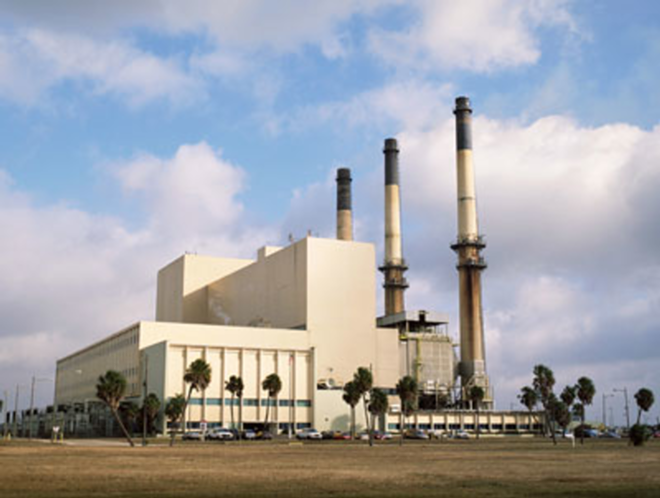Where: Bartow Power Plant, Weedon Island Nature Preserve, 1601 Weedon Island Drive, St. Petersburg
Public access: Minimal. The plant used to offer tours to schools, Boy Scout troupes and others. Security measures have been tightened post-9/11, as the plant is too closely connected to Port Tampa to take any chances. Tours are now limited to employees of Progress Energy, with the public granted entrance on a case-by-case basis, if ever.
Element of danger: Low. Though the place was built in the late 1950s, the safety measures are as modern as you can get; no one walks around the place without a hard hat, safety goggles and earplugs. In fact, Bartow boasts the lowest accident rate of all Progress Energy plants — less than one injury a year — and safety is the number one priority at all times.
Why we went: It's like getting inside the album art of Pink Floyd's Animals, minus the flying piggie. Plus, the plant is the first landmark you see when coming into St. Pete via the Gandy Bridge, and it's just off the road enough to make a person curious. And it's important; the plant produces electricity for 200,000 homes, most of them in Pinellas.
What we discovered: Nothing's creepier than driving up to a giant power plant in a torrential rainstorm, especially when the towering smokestacks are shrouded in gray mist. 'Course, once you get inside, it's pretty much like any workplace — a small lobby, an office area with the usual supplies for paper-pushers, a water cooler, photos of the plant at various stages of its existence. The sound of machinery is faint here, but beyond the doors leading to the plant's center, it's loud enough to require earplugs, though you can't entirely block out the pumping, clanking, banging rattle of various mechanisms at work.
There are huge machines everywhere you look, some color-coded (red means fire) and the rest painted blue and green and salmon and yellow so that everything is easy to see and recognize. Piping runs along the ceiling, and up and down the walls, and the place is sparkling clean compared to what you'd see in a coal-burning plant. The only sign of grime appears near the furnaces, where the heat (generated by oil) turns the water to steam, which powers the turbines, which spins the generator, which creates the electricity. (On a side note, according to plant manager Harry Sideris, turbine plants produce little or no toxic emissions, and the dust in the smoke is mostly removed by a device called a precipitator.) Upstairs, in the control room, a huge window looks out on it all, with employees closely monitoring the generator's inner workings via a circle of desks and monitors in the middle of the room. Adjacent is the old control room, dated by its walls of meters, buttons and mint-green paint, and currently out of use.
"We take visitors up there 'cause it's a good vantage point to see Tampa, St. Pete and Weedon Island in general," says Sideris of the plant's roof, which, on this tour, is off-limits due to the aforementioned rainstorm and dratted safety measures. Instead, he points out an aerial photo of the view no one ever sees from the road, of eight huge, white fuel storage tanks (one de-commissioned) and the intake canal, where ships from Port Tampa drop off the oil.


